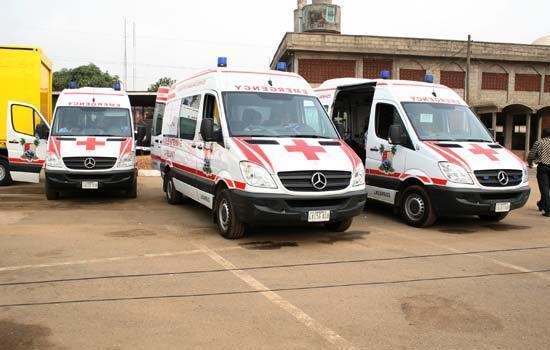In the ideal world, ambulances would become an integrated bubble of safety where risks are nearly eliminated, safeguards are double-redundant, and there are multiple ways to secure providers and patients while in transit.
Many safety measures have been implemented by ambulance manufacturers, but our culture – putting these initiatives into practice in each and every transport – may not quite be following suit. In order to change our culture of safety, we need to look not only at the long-term, big picture, but also toward the short-term, immediate opportunities.
Here’s 4 quick tips to improve ambulance patient (and operator) safety.
In order to change our culture of safety, we need to look not only at the long-term, big picture, but also toward the short-term, immediate opportunities.
1. FASTEN SEAT BELT SIGN
Airlines have a fasten seatbelt sign in addition to the safety demonstration and safety check performed by the crew, so why not ambulances?
If your crews have a visual indicator located throughout the entire patient compartment of the ambulance, it not only places a reminder to buckle up right in front of them, but in front of the patient, too. Designing a decal with wording like, “we value your safety … for that reason, we require that you remain seat belted throughout transport to your destination,” will place some accountability in the patient compartment toward your staff … and a conscientious patient may have no problem calling them out on this, too.
2. ELIMINATE PROJECTILES
Med bags, cardiac monitors, blood pressure cuffs and even people are all potential projectiles in the back of your ambulance.
Buckle them to an available seat, invest in a mounting bracket, stow them in a cabinet or compartment. It’s not hard to eliminate potential projectiles in your ambulance (nor does it have to be expensive).
3. BE APPROPRIATELY VISIBLE
Wear your traffic safety vest, carry a flashlight at night, and light-up your scene when visibility is low; these are simple ways to increase your visibility, when necessary.
There are instances where you may not want to draw attention toward your vehicle (or crews) (e.g., when you’re parked in a safe location, like under the foyer of a nursing home). There’s no reason to leave your flashing lights on – everyone should be able to see your ambulance as they approach it – so why draw unnecessary attention toward it that could potentially other drivers?
Instead of flashing red lights while you’re stationary in a parking lot, flip on your hazard flashers to draw attention to nearby drivers … not the entire neighborhood.
4. FOLLOW TRANSPORT HEIGHT GUIDELINES
There’s a height difference between where you load patients onto your ambulance cot and when you’re loading it into the back of your ambulance. Follow the manufacturer’s guidelines for transportation height.
Regardless of the location or situation, it should not be accepted practice to transport your patients on the cot in the loading height position.
This presents too great of a tip hazard and is a bit intimidating for your patients. Transport height should be at approximately 50% of the cot’s available extended height. Using some tape to mark this height may help as a visual indicator.
Source: EMS1.com




